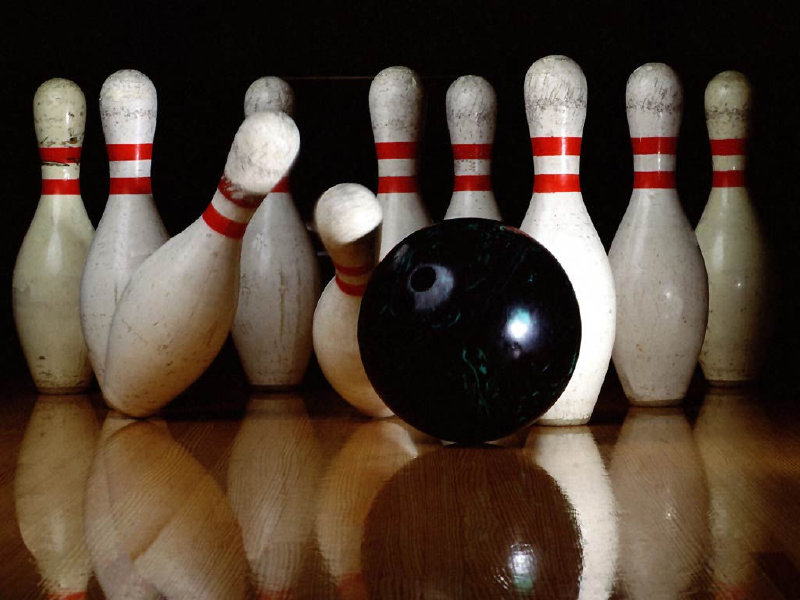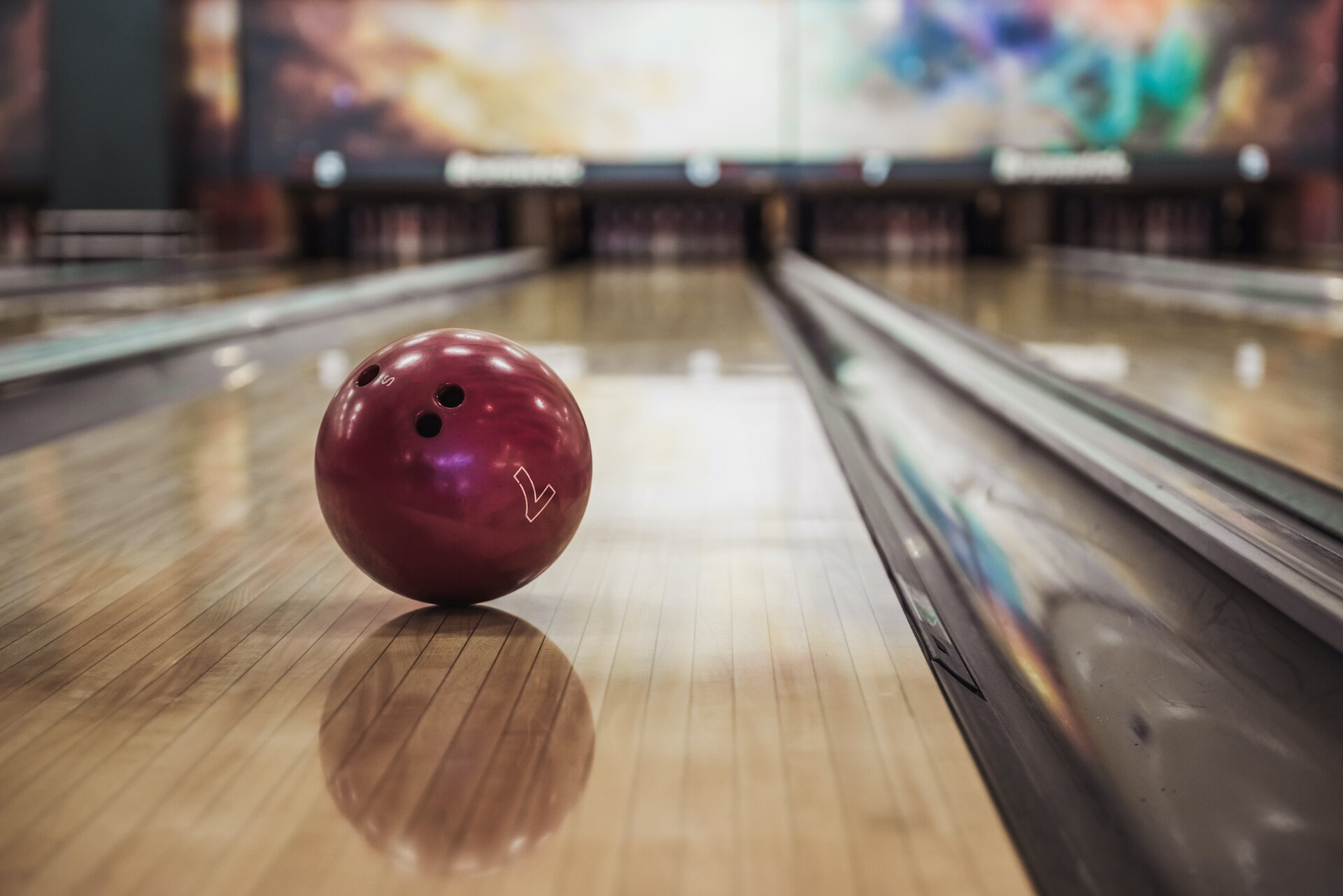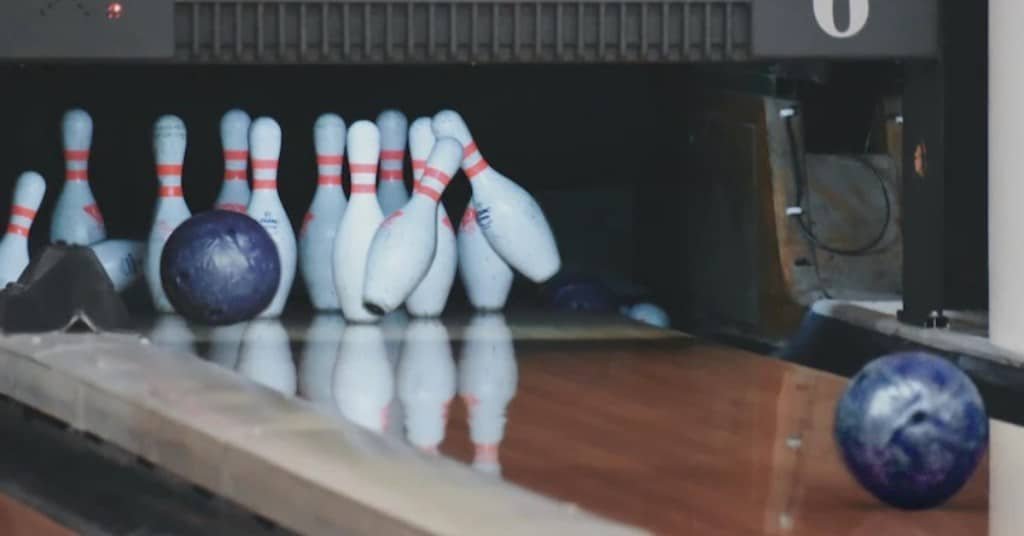Yes, bowling is a sport. It involves skill, precision, and competition.
Like many sports, it has rules, leagues, and professional players. Bowling has been around for centuries. It is a popular activity for people of all ages. While some see it as a fun pastime, others take it very seriously. Professional bowlers train hard to improve their skills.
They compete in tournaments for prizes and recognition. Bowling requires physical coordination, mental focus, and strategy. These elements make it more than just a casual game. In this blog, we will explore the different aspects of bowling. We will look at its history, the skills needed, and why it is considered a sport. Whether you are a casual player or a serious competitor, you will find something interesting. Let’s dive into the world of bowling and see what makes it a true sport.

Credit: www.seattletimes.com
History Of Bowling
The history of bowling is rich and fascinating. It spans centuries and cultures. Understanding its origins and evolution helps us appreciate this popular sport.
Origins And Evolution
Bowling traces back to ancient Egypt. Archaeologists found artifacts dating to 3200 BC. These include pins and balls, suggesting early forms of the game.
In medieval Europe, bowling gained popularity. The Germans played a game called “kegels”. It involved knocking down pins, similar to modern bowling.
By the 19th century, bowling reached America. Immigrants brought their games and traditions. This led to the development of the standardized game we know today.
Bowling In Different Cultures
Bowling’s appeal spans the globe. Each culture has its unique version.
- England: Lawn bowling is popular. Played on grass, it’s a favorite pastime.
- Germany: Kegelbahn is a traditional game. It uses nine pins and smaller balls.
- Italy: Bocce is similar to bowling. Played on soil or sand, it’s a social sport.
In Asia, bowling is a growing trend. Japan and South Korea have large bowling communities. They host international tournaments, showcasing their skills.
Each culture adds its flavor to bowling. This diversity enriches the sport, making it enjoyable worldwide.
Bowling As A Physical Activity
Bowling is often seen as a fun pastime. But it is more than that. It requires physical effort and skill. Let’s explore how bowling is a physical activity.
Skills And Techniques
Bowling needs specific skills and techniques. Accuracy is key. You must aim the ball at the pins. The way you hold the ball matters too. A proper grip gives control. Your stance affects your throw. You need balance and a steady hand. Timing is crucial as well. Release the ball at the right moment. All these skills need practice to perfect.
Physical Demands
Bowling is not just about skills. It also has physical demands. You must lift and throw a heavy ball. This builds arm strength. Your legs get a workout too. Walking up to the lane and maintaining balance requires leg strength. Bowling also improves hand-eye coordination. You need to focus on the pins while throwing the ball. This enhances concentration. Bowling can burn calories too. A typical game can burn around 150 to 300 calories.
Competitive Bowling
Bowling is more than a fun pastime; it is a serious sport. Competitive bowling offers structured leagues and tournaments. Enthusiasts can showcase their skills and compete for titles. Below, we explore the realms of professional leagues and amateur competitions.
Professional Leagues
Professional bowling leagues are the pinnacle of the sport. The Professional Bowlers Association (PBA) is one of the most recognized leagues. Founded in 1958, the PBA hosts numerous tournaments annually. Bowlers earn rankings based on their performance.
The PBA Tour features top bowlers from around the world. Events are broadcast on TV, bringing the sport to millions. Bowlers compete for substantial prize money and titles. The PBA also has regional tours, offering more opportunities for bowlers.
Another notable league is the World Bowling Tour (WBT). It includes events in Europe, Asia, and the Americas. The WBT integrates various national championships. This league ensures a global competition standard.
Amateur Competitions
Amateur bowling competitions are widespread and accessible. These events allow bowlers of all levels to compete. Local bowling centers often host weekly or monthly leagues. Participants can win trophies, medals, or small cash prizes.
USBC (United States Bowling Congress) organizes many amateur tournaments. They provide a platform for bowlers to improve and compete. The USBC Open Championships is one of the largest amateur tournaments. It features thousands of bowlers each year.
Collegiate bowling is also popular. Many colleges have bowling teams competing in national championships. The National Collegiate Athletic Association (NCAA) oversees these events. College tournaments help young bowlers gain experience and exposure.
Below is a table summarizing professional and amateur bowling organizations:
| Organization | Type | Key Events |
|---|---|---|
| Professional Bowlers Association (PBA) | Professional | PBA Tour, Regional Tours |
| World Bowling Tour (WBT) | Professional | Various Global Events |
| United States Bowling Congress (USBC) | Amateur | USBC Open Championships |
| National Collegiate Athletic Association (NCAA) | Amateur | Collegiate Championships |
Bowling In The Olympics
Bowling has a rich history and a passionate following. Many enthusiasts wonder if this beloved game will ever make it to the Olympics. While it has not yet become an Olympic sport, discussions and attempts have occurred over the years.
Past Considerations
Bowling came close to being included in the Olympics in the past. The International Olympic Committee (IOC) has evaluated it multiple times. In 1988, it appeared as a demonstration sport in Seoul. This was a significant step for bowling’s Olympic journey. It showcased the sport to a global audience.
Despite the enthusiasm, it did not secure a permanent spot. Various factors played a role. The IOC considered the sport’s global appeal, infrastructure, and competitive nature. Bowling faced tough competition from other sports vying for a place in the Olympics.
Future Prospects
Looking ahead, bowling still has a chance to become an Olympic sport. Efforts continue to promote its inclusion. The World Bowling organization works tirelessly to meet the IOC’s criteria. They aim to show bowling’s growth and its potential as a competitive sport.
Supporters believe bowling offers unique benefits. It is accessible to people of all ages and abilities. This inclusivity could appeal to the Olympic mission. If successful, millions of bowlers worldwide would celebrate its addition to the Olympics.
Common Myths About Bowling
Bowling often faces misconceptions that downplay its nature as a sport. These myths create an unfair image of bowling. Let’s debunk some of the most common myths.
Bowling Is Not Physically Challenging
Many believe that bowling is not physically demanding. This is far from the truth. Bowling requires strength, balance, and coordination. A bowler needs strong arms to handle the heavy ball. They also need good balance to maintain posture during a throw. The repetitive motion can cause strain on muscles if not done correctly. Professional bowlers often train like athletes in other sports. They focus on building stamina and muscle strength.
Bowling Is Just A Recreational Activity
Another myth is that bowling is just a fun pastime. While bowling can be recreational, it is also a serious sport. There are professional leagues and tournaments worldwide. Professional bowlers spend hours practicing. They study techniques and strategies. This dedication shows that bowling is much more than a simple activity. It is a competitive and skilled sport.

Credit: onmilwaukee.com
Health Benefits Of Bowling
Bowling offers numerous health benefits, including improved coordination and muscle strength. This fun sport also promotes social interaction and reduces stress.
Bowling is a fun activity. It brings people together. But it’s not just about fun. Bowling has many health benefits.
Physical Benefits
Bowling helps your body stay active. It’s a great way to exercise. Here are some physical benefits:
- Strengthens muscles: Lifting and rolling the ball builds muscle strength.
- Improves balance: You need good balance to roll the ball.
- Increases flexibility: Reaching and bending help keep your body flexible.
- Burns calories: A game can burn up to 300 calories.
Bowling is also good for your heart. It gets your heart rate up. This improves heart health.
Mental Benefits
Bowling is good for your mind too. It helps you relax. Here are some mental benefits:
- Reduces stress: Playing with friends can lower stress levels.
- Improves mood: It’s fun and makes you happy.
- Enhances focus: Aiming for the pins helps improve concentration.
- Boosts confidence: Strikes and spares make you feel good.
Playing can also help you sleep better. Less stress and more fun lead to better rest.
Social Benefits
Bowling brings people together. It’s a social sport. Here are some social benefits:
- Builds friendships: Playing with others helps make new friends.
- Strengthens bonds: Spending time with family and friends strengthens relationships.
- Encourages teamwork: Team games improve teamwork and cooperation.
Bowling is a great way to meet people. It’s fun and healthy. Give it a try! “`
Bowling As A Social Activity
Bowling is more than just aiming for strikes. It’s a social activity that brings people together. From friends to families, everyone enjoys the camaraderie. The bowling alley becomes a hub of laughter and friendly competition.
Community Building
Bowling leagues create a sense of community. People join these leagues to meet others with similar interests. Over time, these interactions build strong friendships. Regular meetups lead to a tight-knit group. Many find lifelong friends through these leagues. Everyone supports each other’s progress and celebrates achievements together.
Family Fun
Bowling is perfect for family outings. It suits all ages, from kids to grandparents. Families bond over shared experiences on the lanes. The game is easy to learn, making it accessible for everyone. Special features like bumpers help younger players. This ensures they enjoy the game without frustration.
Many bowling alleys offer family packages. These include discounts and special deals. Such offers make it an affordable option for family fun. The friendly competition adds excitement. Everyone cheers each other on, creating lasting memories.

Credit: www.sodareport.com
Bowling Equipment And Technology
Bowling is more than just knocking down pins. The equipment and technology have evolved, making the game more exciting and challenging. From the balls to the lanes, every detail has been fine-tuned to enhance the player experience.
Evolution Of Bowling Balls
Bowling balls have seen significant changes over the years. Initially, they were made from wood. Today, they are mostly made from synthetic materials.
- Early Balls: Made from hardwood like Lignum Vitae.
- Rubber Balls: Introduced in the early 1900s, offering more durability.
- Plastic Balls: Became popular in the 1960s, providing better control.
- Urethane Balls: Emerged in the 1980s, enhancing hook potential.
- Reactive Resin Balls: Introduced in the 1990s, allowing for more hook and better pin action.
- Particle Balls: Added particles for a better grip on oily lanes.
Advancements In Lane Design
Lane design has also progressed significantly. The lanes themselves and the surrounding technology have evolved.
- Wooden Lanes: Traditional lanes were made of wood, which required frequent maintenance.
- Synthetic Lanes: Introduced in the 1980s, they are more durable and consistent.
- Oil Patterns: Modern lanes have various oil patterns to increase difficulty.
- Automatic Scoring: Modern technology tracks scores automatically, eliminating manual scoring.
These advancements in equipment and technology have made bowling more competitive and enjoyable. Whether you are a professional or a hobbyist, understanding these changes can enhance your game.
Frequently Asked Questions
Is Bowling Considered A Sport?
Yes, bowling is considered a sport. It requires physical skill, precision, and strategy. Competitive leagues and tournaments further validate its status as a sport.
What Skills Are Needed For Bowling?
Bowling requires accuracy, strength, and consistency. Players must master their aim, ball control, and delivery technique. Mental focus is also key.
Can Bowling Be Competitive?
Yes, bowling can be highly competitive. Many people participate in leagues, tournaments, and professional bowling circuits. It offers various competitive levels.
Is Bowling Physically Demanding?
Bowling can be physically demanding. It involves repetitive movements, coordination, and strength. Proper technique helps minimize strain and injury.
Conclusion
Bowling is indeed a sport. It requires skill, strategy, and practice. Players compete to knock down pins. This takes precision and focus. It also offers physical benefits. Bowling strengthens muscles and improves coordination. People of all ages can enjoy it.
Whether played casually or competitively, bowling provides excitement. So, next time you visit a bowling alley, remember, you are participating in a sport. Enjoy the challenge and fun it brings.


